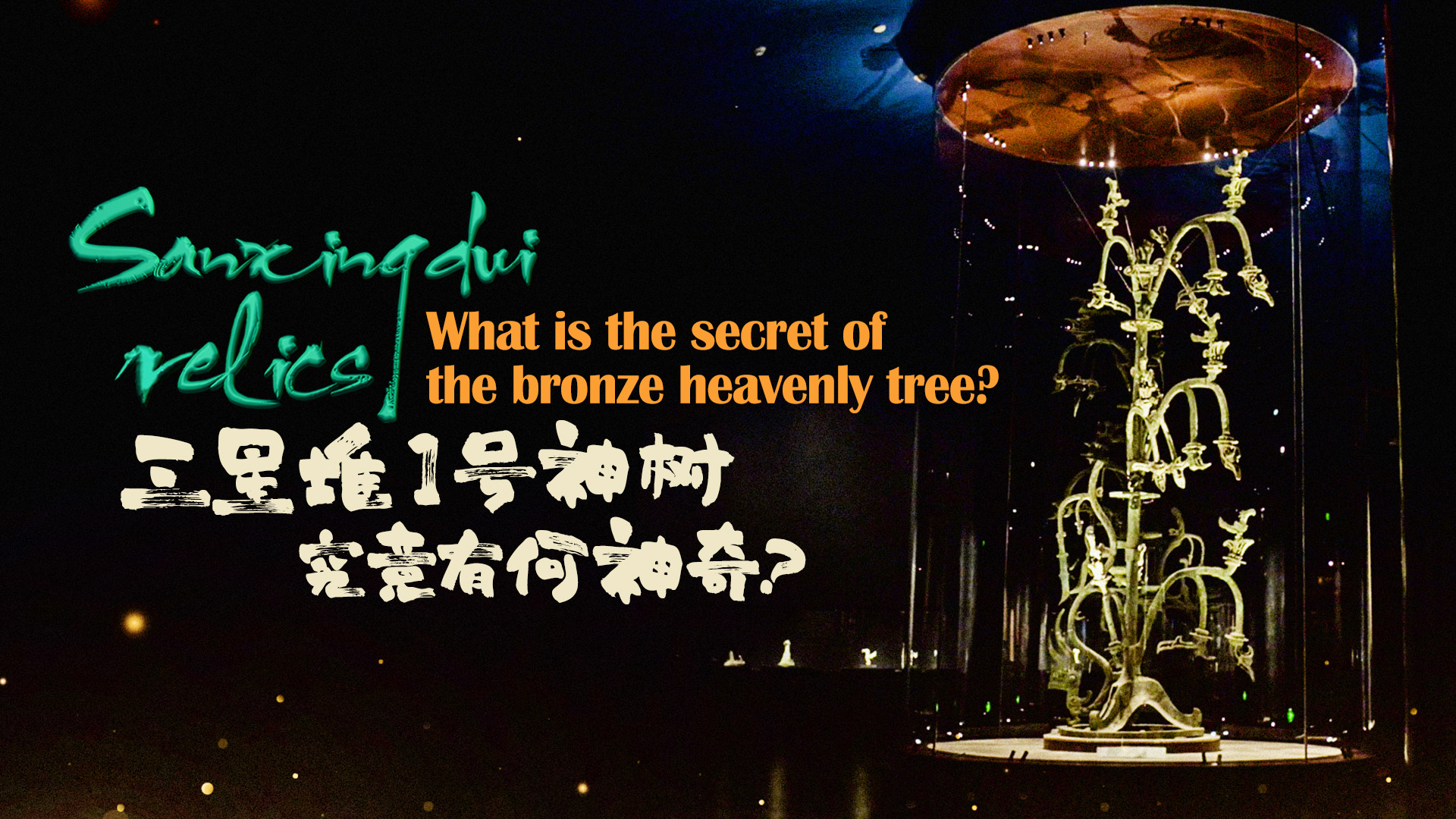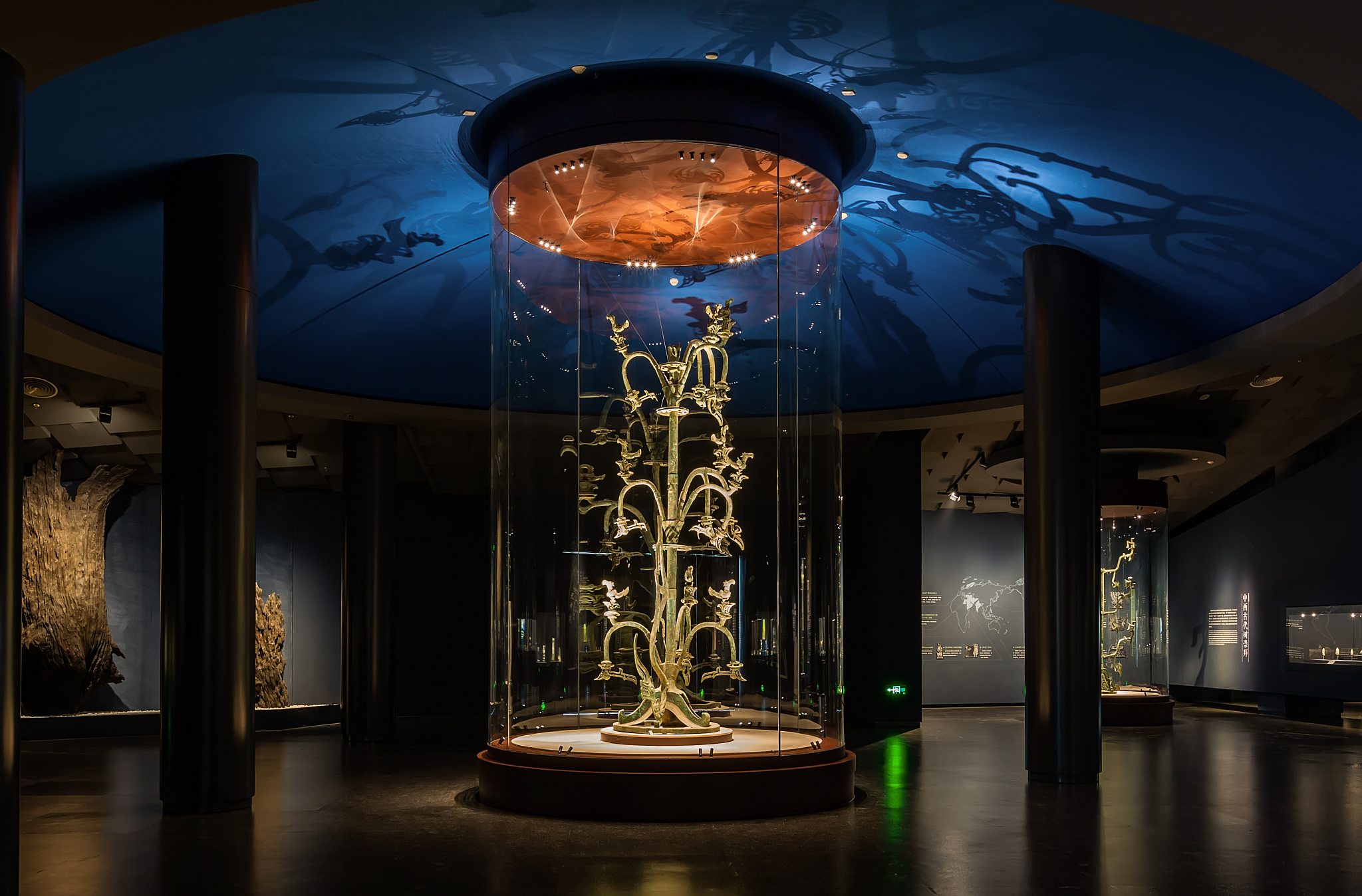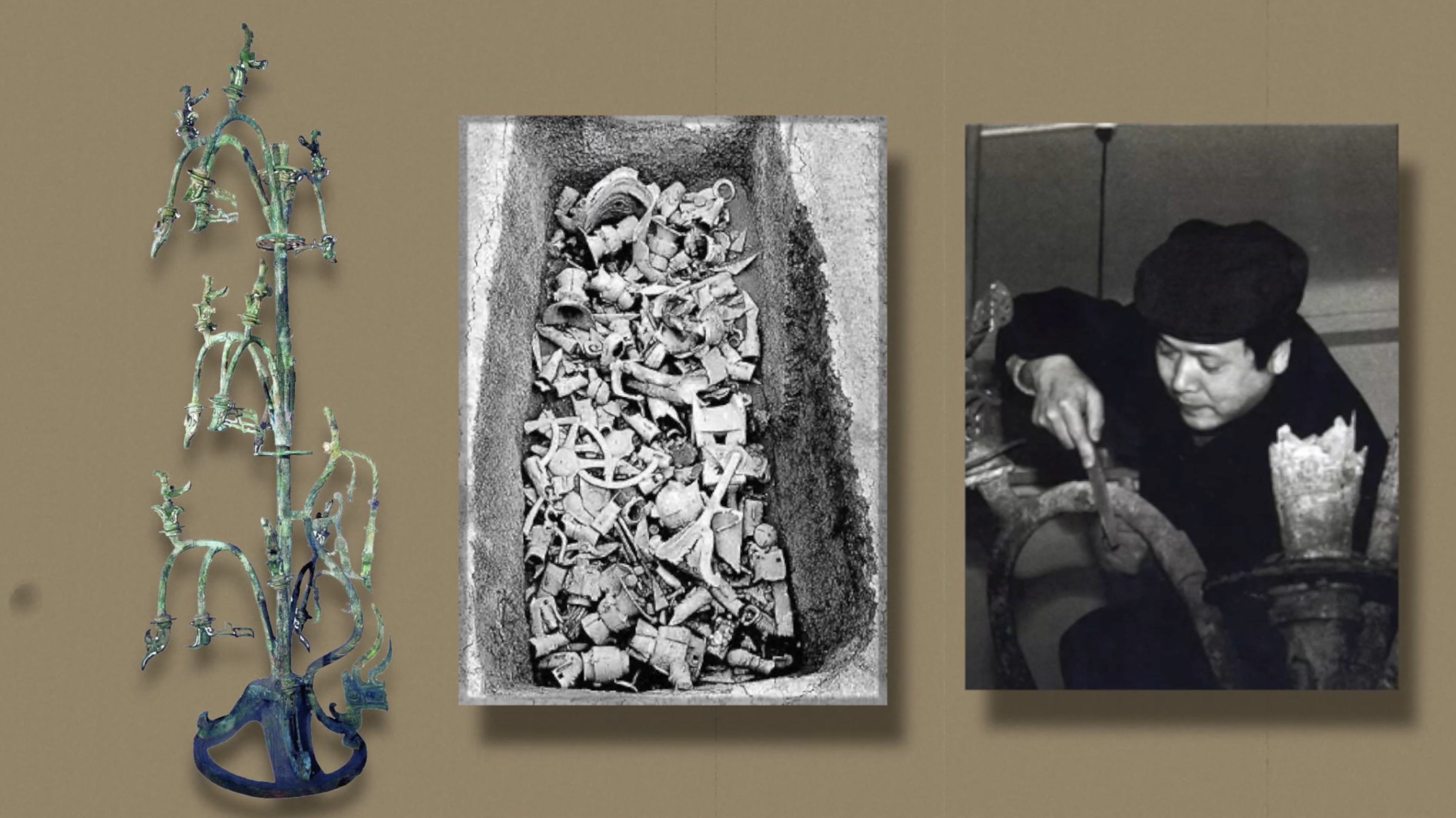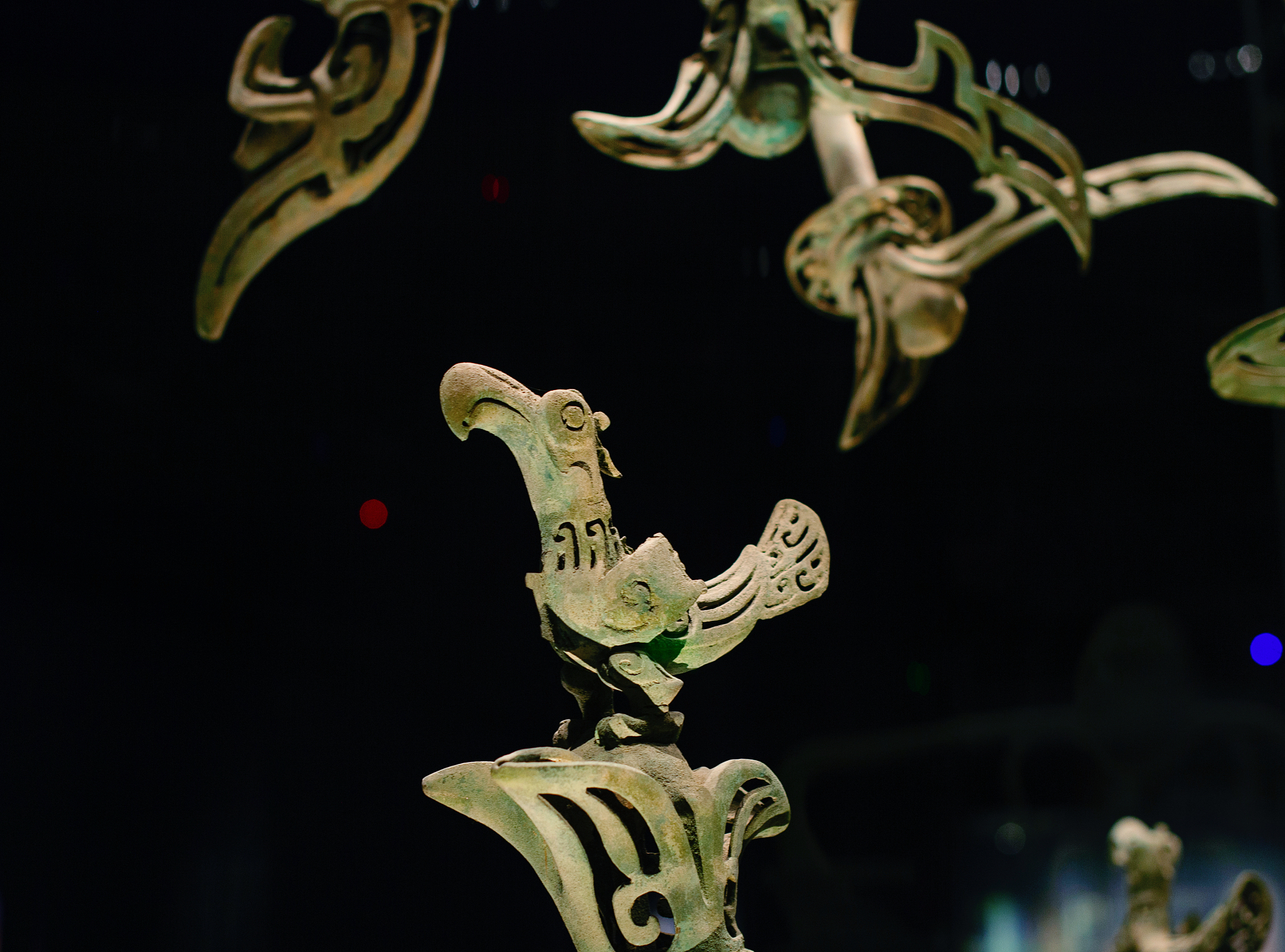01:32

Since their discovery about nine decades ago, the 3,000-year-old Sanxingdui ruins have been recognized as one of the most important ancient remains in the world for their rich and vast cultural content. Among the findings, the huge bronze holy tree is no doubt one of the most colossal and enigmatic.
Sanxingdui translates into "Three-Star Piles." It is a cultural relic from the ancient Shu Kingdom. The name refers to the three earth mounds at the eponymous site, whose discovery attracted international attention and rewrote the history of Chinese civilization.

A bronze holy tree displayed at the Sanxingdui Museum in Sichuan Province, southwest China. /CFP
A bronze holy tree displayed at the Sanxingdui Museum in Sichuan Province, southwest China. /CFP
It took eight years to reassemble the now 3.96-meter-tall bronze holy tree, which is displayed at the Sanxingdui Museum in Sichuan Province, southwest China. Experts say that the tree should be even higher as its treetop is still missing. When it was completed, it brought more questions, not answers. No one has been able to discern its purpose.

It took eight years to reassemble the now 3.96-meter-tall bronze holy tree. /Screenshot from Yangshipin
It took eight years to reassemble the now 3.96-meter-tall bronze holy tree. /Screenshot from Yangshipin
It has a main body and base. It resembles a great tree, rising from the top of a three-sided mountain. At three levels on the trunk, three branches emerge, each bearing three fruit.
Nine of these fruit point upward, each with a bird standing on it. Experts believe it reflects the ancient Shu people's worship of the solar deity.
"This bronze holy tree is the treasure of our museum. The ancient Shu people believed in the legend of 10 suns. They believed the birds carried the other nine suns so that people could see only one sun in the sky. In their minds, the nine suns became nine birds that landed on the holy tree," Zhu Jiake, executive deputy director of Sanxingdui Museum, told CGTN.

One of the nine birds on the bronze holy tree. /CFP
One of the nine birds on the bronze holy tree. /CFP
A closer look reveals a dragon at the base of the trunk that appears to be taking flight. This tree doesn't seem to belong to this world. It certainly doesn't represent the pragmatic understanding of nature evident in other bronzeware produced in the State of Shu 3,000 years ago. Perhaps it had religious significance, serving as a link between the mortal world and the heavens.
(Video by Zhong Jianli)

